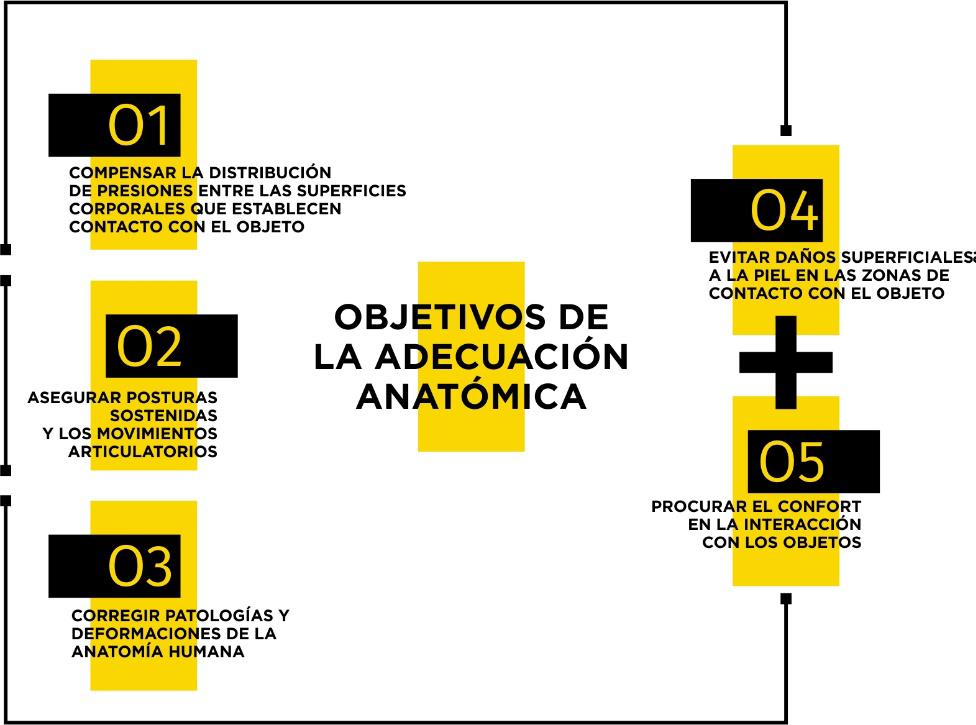Criteria for the analysis of anatomical suitability for the design of industrial objects.
##plugins.themes.bootstrap3.article.main##
Abstract
When we interact with an object, we seldom detail what exactly in it, makes us feel more or less satisfied with its use. A good part of that interaction is resolved considering the human anatomy between in contact with the object. These modifications of the contact zones of the objects is known as Anatomical Adequacy. In practice design, anatomical adjustments are the responsibility of the designer, however, the research related to the subject, it is unsuccessful, having to search for information into other areas of study, such as biomechanics, physiology or anthropometry. The intentions of this research are to lay bases of anatomical studies for the Industrial Design of Products. The goal for the research is to characterize the analysis criteria of the Anatomical Adequacy for the design of industrial products; the achievement of which is the result of the use of methods and techniques such as analysis and synthesis, induction- deduction, documentary analysis and content analysis. Results was, a new definition of the term Anatomical Adequacy and a proposal of criteria for the Anatomical Adequacy studies for product design, separated into three structures: objectives, anatomical criteria and products criteria. The application of the research results, may be in the academic framework and in the design project activity. Discussion is submitting the relevance of the criteria described, and their integration into the Design process
##plugins.themes.bootstrap3.article.details##

This work is licensed under a Creative Commons Attribution-NonCommercial-ShareAlike 4.0 International License.
- Attribution — You must give appropriate credit , provide a link to the license, and indicate if changes were made . You may do so in any reasonable manner, but not in any way that suggests the licensor endorses you or your use.
- NonCommercial — You may not use the material for commercial purposes .
- No additional restrictions — You may not apply legal terms or technological measures that legally restrict others from doing anything the license permits.
- ShareAlike — If you remix, transform, or build upon the material, you must distribute your contribution under the same license as the original. NOTE: This point applies to numbers 1 to 20 of the magazine with the previous CC-BY-NC-SA 4.0 license. Does not apply to the new CC BY-NC 4.0 license from Volume 11, Number. 21 (2024).
References
Gordillo Paneque, C. (2011). Herramientas para el tratamiento del factor uso con intervención de la Ergonomía durante el proceso de diseño. Tesis de Maestría. La Habana. Instituto Superior de Diseño.
Grupo de biomecánica ocupacional (1992). Instituto de Biomecánica de Valencia.
Instituto Biomecánico de Valencia. (SA) (2014) El pie calzado. Guía para el asesoramiento en la selección del calzado para plantillas. Valencia: Instituto Biomecánico de Valencia.
Instituto de Biomecánica de Valencia. (2003). Entorno confortable: Muebles ergonómicos en casa. Valencia: Instituto de Biomecánica de Valencia. Recuperado el Junio 2018
Instituto de Biomecánica de Valencia. (2016). Confort térmico en vehículos eléctricos. Laboratorio de confort térmico del IBV. Valencia: Instituto de Biomecánica de Valencia.
Löbach, B. (1981). Diseño industrial. Bases para la configuración de los productos industriales. Barcelona: Gustavo Gili.
McCormick, E. J. (1980). Ergonomía. Barcelona: Gustavo Gilli.
Noy, E. y Gordillo, C., Cruz , L. A., & Hernández, D. R. (2017). Introducción a la Ergonomía. La Habana. Instituto Superior de Diseño, Departamento de Ergonomía.
Peña, S. L. (2008). Currículo para las carreras de Diseño en Cuba. Tesis de Maestría, La Habana. Instituto Superior de Diseño.
Peña , S. L. (2015, Junio). Diseño con sentido. A3 Manos, 28.
Pérez, M., & Peña, S. L. (2015). DISEÑO. El Objeto de la profesión. A3 Manos, 11.
Prado, L. R., & Ávila, R. (2006). Ergonomía y diseño de espacios habitables. Guadalajara, Jalisco, México: Centro Universitario de Arte, Arquitectura y Diseño.






















